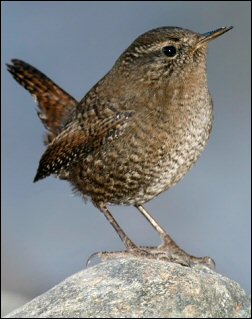Tianjin

Birding Tianjin
Strictly speaking Tianjin is not a province but a municipality but it has the same political status as a province.Tianjin is the third largest city of the People’s Republic of China in terms of urban population. Administratively it is one of the four municipalities that have provincial-level status, reporting directly to the central government. Also, its urban land area is the third largest in China, ranked only after Beijing and Shanghai. The urban area is located along the Hai He River, which connects to the Yellow and Yangtze Rivers via the Grand Canal in Tianjin. Its ports, some distance away, are located on Bohai Gulf in the Pacific Ocean. Tianjin was once home to foreign concessions in the late Qing Dynasty and early Kuomintang era. The municipality now incorporates the coastal region of Tanggu, home to the Binhai and the Techonology and ecomnomic developing area, also know as TEDA. Tianjin Municipality borders Hebei province to the north, south, and west; Chinese capital Beijing is to the northwest, and Bohai Gulf to the east.Tianjin Municipality is generally flat, and swampy near the coast, but hilly in the far north, where the Yanshan Mountains pass through the tip of northern Tianjin. The highest point in Tianjin is Jiushanding Peak on the northern border with Hebei, at an altitude of 1078 m.The Hai He River forms within Tianjin Municipality at the confluence of the Ziya River, Daqing River, Yongding River, North Grand Canal, and South Grand Canal; and enters the Pacific Ocean at Tianjin Municipality as well, in Dagu District. Major reservoirs include the Beidagang Reservoir in the extreme south (in Dagang District) and the Yuqiao Reservoir in the extreme north (in Ji County).Tianjin’s climate is a monsoon-influenced humid continental climate (Koppen climate classification Dwa) characterized by hot, humid summers, due to the monsoon, and dry, cold winters, due to the Siberian anticyclone. Average highs in January and July are 2 °C (36 °F) and 31 °C (87 °F) respectively). Spring is windy but dry, and most of the precipitation takes place in July and August. Tianjin also experiences occasional spring sandstorms which blow in from the Gobi Desert and may last for several days.
-
Wikipedia
GNU Free Documentation License
http://en.wikipedia.org/wiki/Tianjin
-
Number of bird species: 382
(As at August 2018)
-
Tianjin Birdwatching Society
InformationTianjin Bird Watching Society was an NGO established by ornithologists, wild bird photographers, birdwatchers and environmentalists in Jan 2010
-
IBA Beidagang Wetland
InformationSatellite ViewBeidagang is the halfway station for many migratory birds flying from East Asia to Australia and back. The wetland offers the birds food, water, and shelter. It is a very important habitat for shorebirds, swans, geese, storks, cranes, gulls, raptors, and even great bustards... -
NR Paleocoastal
InformationSatellite ViewPaleocoastal Nature Reserve, covering an area of 900 hectares, is located in the boundaries of Jixian County of Tianjin Municipality.

